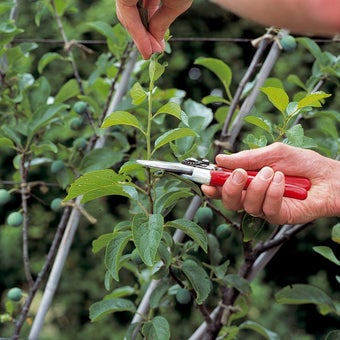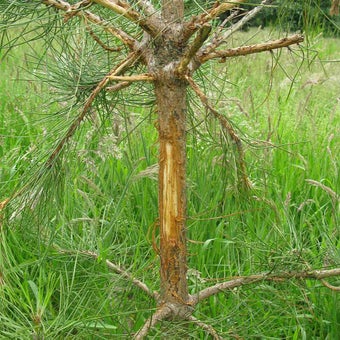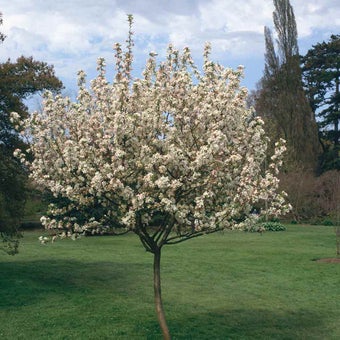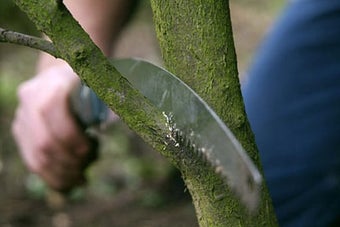
Quick facts
Plants affected - Birch, walnut, maple, hornbeam, Laburnum, magnolia, mulberry, poplar, Tilia, grape vine, Sophora
Main causes - Pruning at the wrong time of year
Timing - Usually seen in late winter to early spring
What is bleeding?
is when leaks from a wound or pruning cut on a tree, shrub or woody climber. Sometimes this may be a gentle seeping, other times a copious flow.
Symptoms
You may notice oozing from the wound directly after pruning, or you may simply notice staining some time later where the sap has flowed down and wetted the .
Cause
occurs due to the pressure of within the tissues that conduct water and sugars around the plant.
Normally, the sap of plants falls in autumn to early winter, as the plants lose their leaves and become . Many deciduous trees and shrubs are best pruned while dormant and bleeding is minimised at this time.
In late winter to early spring, the sap starts to rise again, delivering water and sugar to the new leaf as they swell in readiness for spring. The sap of some trees and shrubs, such as grape vines, birch and walnut trees, begins to rise very early. These plants are particularly vulnerable to bleeding if pruned in mid- to late winter or early spring, as the rising sap spills out from the pruning cut.
Control
There is no practical method for stopping the flow of from a wound, and in most cases, this bleeding is completely harmless. Binding and wrapping the cut is not recommended, as it is better to allow air to reach the wound and let it heal naturally. Wrapping or binding can cause dampness and lack of , encouraging the development of fungal diseases. We no longer recommend painting pruning cuts with wound paints (such as Arbrex), as this too may trap moisture and promote fungal infection.
Instead, gardeners are advised to check the recommended times for pruning particular trees, shrubs and climbers. This should minimise bleeding.
The following plants are particularly prone to bleeding, so pruning at the correct time will help prevent it.
Acer(maple): Prune Japanese maples (A. palmatum and A. japonicum) after leaf fall but before January; prune snakebark maples (e.g. A. davidii, A. pensylvanicum, A. rufinerve) in late summer.
Betula(birch): Avoid any pruning if possible; otherwise prune late summer to mid-winter.
Carpinus (hornbeam): Prune late summer to mid-winter.
Carya (pecan and hickory): Prune in autumn or early winter.
Juglans (walnut): Prune mid-summer, before mid-winter.
Laburnum: Prune late summer, before mid-winter.
Magnolia( , spring-flowering types only): Prune early to mid-summer.
Morus (mulberry): Prune from autumn to early winter.
Populus (poplar): Prune late summer or early autumn, except for P. x candicans and its cultivars, which can be pruned in late winter and do not usually bleed.
Sophora: Prune in summer.
Tilia(lime): Prune mid-summer to mid-winter.
Vitis(grape vine – edible and ornamental types): Prune after leaf fall but before Christmas to be safe.
Check individual plants in the book, RHS Pruning & Training, by Christopher Brickell and David Joyce. Available from the RHS Book Shop online.




